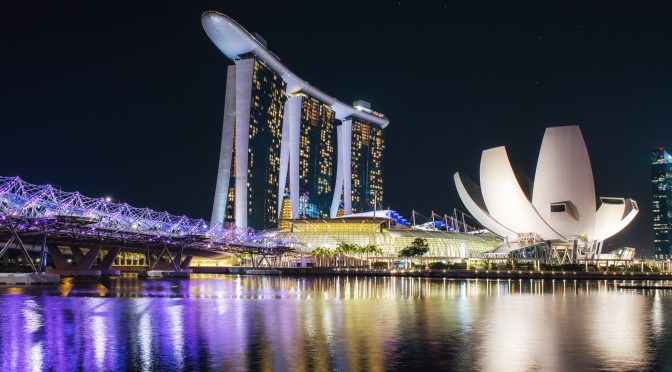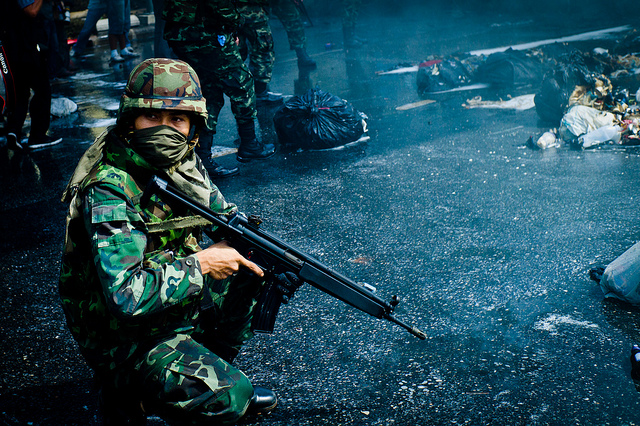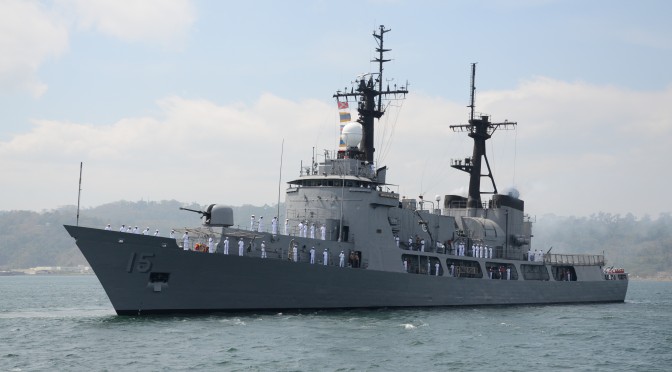By Shang-su Wu
Due to their central location between the Indian and Pacific Oceans, maritime Southeast Asian countries have increasingly important roles in the Free and Open Indo-Pacific (FOIP) Initiative. Despite some constraints, such as the inability of the Association of Southeast Asian Nations (ASEAN) to coordinate its membership’s defenses, these regional states and their relatively weak but growing navies, with a home field advantage, matter in terms of the balance of power in the Indo-Pacific region. Based on their non-alliance tradition and economic interests with China, Southeast Asian countries would not join FOIP, but engagement between them would be crucial for the strategy connecting the two oceans.
Geographically, Indonesia, Malaysia, and Singapore are the most relevant to control of the critical straits, whilst other coastal states, such as Brunei, Myanmar, the Philippines, Thailand, and Vietnam have a potential influence over adjacent sea lines of communication (SLOCs). These Southeast Asian countries are not militarily or economically equivalent with any member of the Quad (the U.S., Japan, Australia, and India), or China, and it is unlikely that these relatively weak countries could challenge the rights of passage under the United Nation Convention on Laws of the Sea (UNCLOS). However, while their naval and air bases are strategically important for securing nearby SLOCs, the physical capture of such locations appears politically and militarily infeasible nowadays.
Politically, it would be very difficult for the UN Security Council (UNSC) to pass any resolution authorizing any power to conquer one or more Southeast Asian countries, as a veto would be expected from other permanent UNSC members. Although hybrid warfare, such as a Crimea-style invasion, could not be excluded, lack of similar historical and ethnic linkages could make such operations more uncertain, if not unlikely. In addition, unlike some “trouble-maker” countries that challenge existing international norms, Southeast Asian countries generally remain neutral, taking modest positions which keep them from becoming legitimate targets in the international community.
Militarily, force projection in Southeast Asia is already a certain challenge for most aggressors, and to secure control over local populations could be even more difficult. For example, territorial defense with grassroots organizations prepared by the Indonesian Armed Forces (Tentara Nasional Indonesia, TNI) would provide systematic resistance during and after conventional warfare in cases such as Sunda, Lombok, Makassar, and other Straits in the Indonesian Archipelago. Securing control of the Malacca Strait is further complicated since it falls under the control of three countries. Given that conquering the islands at chokepoints in key straits would be difficult, the roles of maritime Southeast Asian countries in the FOIP need to be discussed in various scenarios.
Scenarios, Positions and Policies
The potential maritime conflicts between sea powers in the Indo-Pacific region can be categorized into three scenarios: major conflict, tight confrontation, and peacetime. A major conflict between China and the U.S., and perhaps its allies, would only likely impact Southeast Asia if China is able to maintain sea control over the first island chain. If Beijing loses the first battles or cannot retain sea control over the specific disputed area, its dream of sea power could vanish and make Southeast Asia strategically less important. In contrast, if China is able to gain the upper hand over the U.S. or another Quad member in a first-round exchange, this could force the latter to choose between preparing for the next battle or blockading the key straits in Southeast Asia, aside from negotiating for peace. In a blockade, there is no doubt as to the importance of the maritime Southeast Asian states along the straits. Another scenario is a major Indo-Sino conflict shifting from land borders to the maritim domain, where Southeast Asia is an inevitable chokepoint for both navies. In a scenario of tight confrontation where aircraft and vessels of China and the Quad members follow each other with occasional provocations, the relatively narrow sea passes in Southeast Asia are convenient for such tailing operations. During peacetime, the straits in Southeast Asia still provide critical locations for surveillance and deterrence.
Southeast Asian countries would have three political positions in the face of such scenarios: strict neutrality, loose neutrality, and aligning with one side. Loose neutrality would be the common practice in the region, evidenced in all maritime Southeast Asian countries’ policies and participation in the non-alliance movement. Although the Philippines and Thailand retain their defense treaties with the U.S., their current policies are notably different. During the previous Aquino administration between 2010 and 2016, Manila was probably seen as pro-Washington due to countering Beijing’s territorial claims in the West Philippine Sea, but President Duterte has replaced these policies with Beijing-friendly ones. In contrast to the common practice, strict neutrality and alignment with one side would be less favorable options for Southeast Asian countries during peacetime or even in crises of tight confrontation due to different concerns. Strict neutrality does not fit the complicated inter-state competition overshadowing the era of globalization, but alignment would present risk for being on a loser’s side.
Under these loosely neutral positions, each Southeast Asian country may have certain policies favoring a specific power. Arms procurements and intelligence sharing would represent relatively implicit policies showing their preferences or linkage. Joint exercises, foreign military presence, and deployments are clearer indicators.
The Regional Military Capacity
Thanks to decades of economic growth, maritime Southeast Asian countries have significantly modernized their navies and other related forces, which have strategic values for two main reasons. Firstly, as an overt invasion of Southeast Asian countries is unlikely, their military capacity is unlikely to be fully neutralized. As a result, their specific capabilities, particularly submarines and other sea denial means, can deter potential aggressors. Secondly, despite inferior quantity and perhaps quality, regional militaries have home field advantages, such as theater familiarity and shorter LOCs.
Several characteristics appear when examining Southeast Asian naval modernization. Firstly, the naval modernization among regional states is diverse on both national and asset level. On the national level, some countries, like Singapore, are comprehensively armed, and some others, such as Brunei, are at best partially equipped. On the asset level, vessels and aircraft in the same classes may have differing performances due to different designs and costs. For example, some regional frigates are armed with layered defense against anti-ship missiles, but some have only a single system of short-ranged surface-to-air missiles (SAM) without any additional margin.
Secondly, despite the diverse practices, regional countries take a balanced fleet approach and invest in both sea control and sea denial capabilities. The level of distribution between sea control, such as major surface combatants, and sea denial, such as submarines and fast attack craft (FAC), depends on each country’s strategic circumstances. The balanced fleet approach weakens the capacity of Southeast Asian navies in conventional warfare against a stronger adversary, as most ships remain vulnerable in the face of superior firepower and are unlikely to achieve their sea control mission during wartime. However, the regional navies have to deal with peacetime missions, such as counter piracy and maritime territorial control, where large surface platforms are essential. In other words, the balanced fleet approach reflects the compromise between the needs of peacetime and wartime.
Thirdly, regional submarines provide a vital deterrence by denial capability. Southeast Asian submarines within their home waters, despite their small numbers, relatively little experiences, and less sophisticated technologies, would still pose a credible threat to intruding sea powers. An external sea power may have the capacity to absorb some losses, but these losses would stretch limited expeditionary capabilities, damage its national pride, and possibly affect domestic political decision making. Striking the home bases of these submarines would be an effective measure to lower their operational sustainability, but it would significantly escalate the situation during a crisis and threaten whatever argument for legitimacy the invader was trying to use to justify their actions.
There are some drawbacks in regional naval modernization. Although more and more capable surface combatants are joining the service, a great portion of the fleets have weak air defense and anti-submarine capabilities which makes them vulnerable to modern anti-ship missiles and submarines. Maritime patrol aircraft would provide the main method of surveillance, but are vulnerable and unable to conduct patrols in a hostile air space. Without maritime patrol aircraft, these regional navies would have limited surveillance capacity. Southeast Asian states possess fighters with airborne sea strike capability, and they may be able to respond to challenges from a ski-jump aircraft carrier with limited capacity and support. However, as all these fighters belong to air forces which focus and train for more missions than maritime operations, their jointness with navies would be limited. Due to these drawbacks plus the issue of relatively inferior quantity, maritime Southeast Asian countries have little room for escalation.
Gaining Support
The traditional methods of formal alliance may not successfully work with maritime Southeast Asian countries under the present context. Trade, investment, and other economic ties with China would constrain the willingness and likelihood of direct participation by maritime Southeast Asian countries in the FOIP Initiative. Moreover, Beijing is also endeavoring to develop and deepen security ties in the region, evidenced in arms deals, personnel exchanges, joint exercises, and other forms of interactions. However, it is possible to gain the contribution of regional countries to the FOIP Initiative, under their loose neutrality position. As maritime Southeast Asian countries have relatively less experiences in various military capabilities, the militaries of Quad members with rich operational experiences could provide more interaction based on the existing foundation.
Intertwined interests would be another significant motive for supporting the FOIP. Given their maritime interests and territory, Southeast Asian countries are likely to further expand their maritime capacity and the Quad members can supply proper assets and technologies to fill their existing shortfalls, while arms deals with logistical and training packages provide another channel to strengthen military-to-military relations. Last but not least, the Quad members, with their combined market share dwarfing China’s, should build up economic ties with maritime Southeast Asian countries. It would not be easy for regional countries to formally participate in the FOIP, but their cooperation or other positive responses would be the core of a strategy across the two oceans.
Shang-su Wu is a research fellow at the S. Rajaratnam School of International Studies (RSIS), Nanyang Technological University in Singapore.
Featured Image: Marina Bay Sands Resort in Singapore (Wikimedia Commons)







 Welcome back to the Asia Pacific segment of Sea Control! In this episode Natalie Sambhi picks the brains of Dr Malcolm Cook of the
Welcome back to the Asia Pacific segment of Sea Control! In this episode Natalie Sambhi picks the brains of Dr Malcolm Cook of the